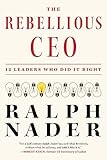Now this is real news: A group of influential Homo sapiens has resolved to grant rights to other apes. Spain’s environmental ministers accepted a declaration from scientists and philosophers
Amnesty International has expressed its alarm: What about the rights of the world’s many detained and degraded human beings?
And yet, is there any reason why basic rights to life and liberty should only be discussed with reference to humanity? Can’t we humans act decently — to human beings and others? Surely, respect should be nurtured in all its forms.
Then again, there’s good reason to look closely whenever rights are considered anew. Will the precedent reinforce or diminish what the human community looks for in basic rights?
Fifteen years ago, Paola Cavalieri and Peter Singer gathered together a collective of writers to propose basic rights for chimpanzees, gorillas, and orangutans in a book called The Great Ape Project.
Really, we could call any animals on this planet our evolutionary comrades; calculating the gene overlap seems awfully arbitrary. The key similarity is that other apes are conscious; they experience life.
Although genetic similarity is, I believe, the wrong argument (and one that can cut both ways, for scientists are quick to say that slight DNA differences can be significant), expanding our concepts of personhood and decommodifying conscious life is the right path to travel. How refreshing it will be to see our law respect any conscious beings beyond the ones who use lawn mowers and credit cards.
And taking the rights of apes seriously would be a boon to entire forest biocommunities that need us to stop breeding cattle and logging ancient forests and extracting everything we can get our drills into. The best possible outcome from the Spanish resolution would be the start of a robust movement to defend the planet’s untamed places. That would help apes and tree frogs alike, and they all should have the simple right to live as they will.
But is freedom what the Spanish proposal really seeks? Let’s ask now, while it’s still being worked on. Because unless it (a) ensures the phasing out of captivity and (b) protects habitat, Spain’s animal-rights victory will be illusory. Already it’s showing the hallmarks of illusion: While keeping apes for circuses and television spots will be forbidden under Spain’s penal code, keeping some 315 non-human apes in Spanish zoos will remain legal.
As USA Today described them, the resolutions “give great apes, such as chimpanzees and gorillas, the right to life, freedom from arbitrary captivity and protection from torture.”
Apes who are already captive, and cannot safely return to their lands, should not be exhibited, but should instead be offered private refuge at a sanctuary prepared to meet their needs, and advocate for their rights. In Spain, both the Centro Rainfer of Madrid and Catalonia’s Mona Foundation have been called sanctuaries, but both fall short of the mark. Rainfer engages in captive breeding of primates as well as language experiments
Detainees
Challenges to the conception of primates as resources have became a recurring motif in Europe. Britain’s parliament rejected the use of non-human great apes in scientific experiments in 1997; Lord Williams of Mostyn called its end “a matter of morality.”
Uprooted from western Africa for Baxter’s pharmaceutical testing a quarter-century ago, Hiasl now lives at a Vienna animal shelter. The case began when a group called the Association Against Animal Factories sought a court-appointed guardian to help keep support money in Hiasl’s own name and shield Hiasl from being sold. “It’s hard,” said a New York Times editorial, “to see the harm in that.”
Right. Because that wouldn’t be a radical change at all. Martin Balluch, of the Association against Animal Factories, said about Hiasl: “We argue that he’s a person and he’s capable of owning something himself, as opposed to being owned, and that he can manage his money. This means he can start a court case against Baxter, which at the very least should mean his old age pension is secure.”
But a pension does not equal animal rights. Catharine MacKinnon notes the ways we “project human projects onto animals, to look for and find or not find ourselves in them”; whereas the key question for the animal-rights advocate is “what they want from us, if anything other than to be let alone, and what it will take to learn the answer.”
Hiasl’s case and Spain’s rights proposal have been followed by reporters the world over. But only the USA continues the large-scale use of non-human apes. And the country that warehouses hundreds of apes for use in biomedical and cognitive experiments is in no hurry to extend justice to them.
The Chimpanzee Health Improvement, Maintenance and Protection (“CHIMP”) Act of 2000 moved some “surplus” chimpanzees out of US labs, thereby saving money for the government’s whole research enterprise.
Jane Goodall, author of the opening chapter in The Great Ape Project, testified before Congress in support of the CHIMP Act, calling the warehousing agreement a “sanctuary.” Michael Bilirakis, who chaired the hearing, noted that the National Institutes of Health didn’t want a law that would put chimpanzees completely off-limits to researchers.
Goodall said sanctuaries don’t rule out “a small operation” and asserted that “the really cruel thing” would be moving them from a more spacious area into a small cage for testing.
But the really cruel thing is how people made up an ostensibly humanitarian law to hold onto apes as research specimens. What can change the status quo now? Courts should be pressed to consider non-human primates as rightsholders. Meanwhile, the best we can do for them is to release them from the traps our laws have constructed for them. For example, a rulemaking that exempts primates from the federal Animal Welfare Act — based on the point that handling non-human primates for research and commerce is no more appropriate than handling ourselves that way — would bring us a step closer to ending our instrumental use of other conscious beings.
The lawmakers are now considering a Great Ape Protection Act, introduced in the House of Representatives in April. Its text cites the apes’ intelligence and susceptibility to psychological trauma, their genetic relationship to humans, and the expense of keeping them. If enacted, the law would effect a three-year phase-out of invasive research on any chimpanzee, bonobo, gorilla, orang-utan, or gibbon. Invasive research would include that which might cause injury, distress or fear — but not “close observation of natural or voluntary behavior” of an individual. This suggests that cognitive research, which researchers go to some lengths to portray as voluntary, will be condoned. This likelihood is underscored by the text’s references to the warehousing system established by the CHIMP Act — which does permit cognitive experiments. These laws fail to take apes’ core interests seriously. The objects of “non-invasive” studies are often isolated, and their space and time is never their own. When outside the confines of the lab, apes involved in language studies are walked on leads.
Let Untamed Beings Be
For too long, animals have been plucked out of their own spaces and stuck in labs, zoos, and roadside shows. And now, people are making labs and zoos out of the habitat itself.
The Great Ape Project hopes to involve Spanish communities with the Jane Goodall Institute in Africa.
Magic Safari explains that the process involves two years of manipulation. Once habituated, or trained to accept humans, the chimpanzees are subjected to “a continuous day-by-day focus. Problems can occur…” Evidently, not all of these individuals are thrilled to stop living on their terms and be turned into a moving zoo.
Gorillas face the similar intrusions. At a conference sponsored by the U.S. government, Rwanda’s minister of Trade and Industry spoke of gorillas (the Virunga Mountains are home to nearly half of the world’s 700 or so mountain gorillas) as a common resource of Uganda, the Democratic Republic of Congo, and Rwanda.
Forest-dwelling chimpanzees have also been habituated for research. Some focuses on the effects of logging. But contrast the views expressed when, early this year, an isolated human tribe was reportedly spotted in Brazil. The director of Survival International said such tribes would “be made extinct” if loggers get their land, yet the integrity and privacy of the people is so respected that debate raged even over taking photos of “uncontacted” tribes to prove they exist to stop logging.
When a BBC journalist signed up for a tourist trip to make “first contact” with a West Papuan tribe, Survival’s director Stephen Corry objected, “Tourists could threaten these peoples, especially through the risk of bringing in disease.” If the filmed encounter was real, said Corry, “the tour operator and tourists should be ashamed of themselves.”
If animal rights are to have real meaning at all, no words get nearer to their core than the simple right to be let alone. That very concept arose in an 1890 Harvard Law Review article co-authored by the future Supreme Court Justice Louis Brandeis.
Almost 40 years later, Justice Brandeis wrote that the Constitution’s framers conferred, against the government, “the right to be let alone — the most comprehensive of rights and the right most valued by civilized men.”
The Way Ahead
The time is ripe for all primates’ rights. In 2005, a panel of 22 scientists, lawyers, and philosophers reported the results of an extended debate over the wisdom of inserting human stem cells into monkey brains, noting the team’s scientists weren’t sure how to ethically separate humans from other primates. And time is of the essence, with nearly half of all communities of primates at risk of extinction due to our hunting and clear-cutting, including for resource-guzzling animal agribusiness. Primates’ rights would project a clear message: Our “go forth and multiply” approach is desperately outdated.
Wesley J. Smith, a senior fellow at the Discovery Institute, warns that animal rights would “destroy the unique status of man and thus initiate a wholesale transformation of Western civilization.” Seems to me a wholesale transformation is just what’s needed. Only a paradigm shift will have us live in a manner reconcilable with ethics, and the undeniable reality that we are part of a biosphere.
So let’s do it. Let’s allow chimpanzees to live in their lands, rather expect them to have babies in zoos and language labs. Let’s teach our children a bird in the hand’s certainly not worth two in the bush. Let’s leave Chilean Sea Bass in the Chilean Sea. Let’s have peaceable cookbooks. And let’s be careful, as we go, to respect rights. For the world’s free-living beings, that would mean respecting their interest in simply being let alone.
* Lee Hall co-authored the article “From Property to Person: The Case of Evelyn Hart” (showing the constitutional arguments that could be presented in the U.S. court system in support of legal personhood for non-human apes), and also facilitates the project “Great Ape Standing and Personhood” (GRASP) as legal director for Friends of Animals.










